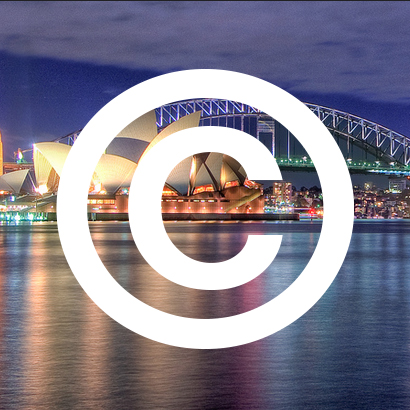Like a heavily copyrighted message in a bottle floating up to the shores of this week’s Trans-Pacific Partnership (TPP) negotiations in Ottawa, Australia’s warning tells tales: do not let giant U.S. conglomerates mess with your intellectual property rights (IPR). At least, not if you care about the Internet and the future of sharing and collaborating online, not to mention innovation and the future of the public domain.
Australia would know. Thanks to the Australia-U.S. Free Trade Agreement (AUSFTA), key aspects of U.S. intellectual property (IP) laws were imported in 2004, and Australians have been regretting it ever since. Canadians should pay close attention, because the United States is now trying to impose even more draconian IP laws on Canada by way of the TPP, which would restrict innovation, Internet freedom, and free expression more than AUSFTA does for Australians and even more than the United States’ own current IP laws would. Holy Netflix.
So, what exactly happened in Australia, and why should Canadians care?
Initially, the Australia was forced to extend copyright for authors’ works by 20 years, despite experts worldwide denouncing the move as economically harmful, and a mere power grab for giant U.S. conglomerates. The extension cost Australia $88 million per year on copyright alone, which by now has added up to a whopping loss of $700 million (and growing).
Australia is a net importer of intellectual property, importing about five times more than it exports, which means that strengthening IPR globally damages Australia’s bottom line — they are always paying more royalties than they receive. What’s worse, every dollar in profit flows overseas. Canada is also a net importer, and has tellingly resisted U.S. pressure to impose stricter regulations. Canadians who want continued access to media from around the world should make sure it stays that way.
Australia was also forced to criminalize devices that get around technological protection measures (TPMs), even if individuals are using them to access content legally. This move allowed U.S. giants to artificially inflate prices and manipulate what software, games, music, and so on are allowed in which countries, blocking common ways to make them available everywhere and at lower prices.
This is the reason you can’t, for instance, play a DVD you bought in Hong Kong on your Canadian DVD player. It’s also why Australians pay about 50 per cent more than they should for everyday products like DVDs.
The rest of us are not far behind. The TPP won’t increase free trade, but will instead decrease what is freely available to the average Internet user. It will also put a freeze on companies’ need to improve or compete for your business, since users will have little choice but to buy or subscribe to certain technologies or brands, no matter how flawed the product or service is. It’s not about copyright protection, but digital protectionism.
Going further at the urging of the U.S., Australia reduced exceptions for even temporary copies of works, generated in caching, indexing, or as part of the technical process of everyday Internet surfing. It seems common sense that you wouldn’t sue over this, but tell that to plaintiffs in the U.K.
Outlawing temporary copies impairs the software industry by forbidding different software platforms from exchanging information and handling each others’ data in a way users can actually work with. An example of this kind of interoperability would be your ability to edit Microsoft Word documents in Pages or OpenOffice. The lack of “protection for such activities makes Australia an unattractive place to locate…data analysis and search services over the Internet.” This puts Australia at a huge disadvantage when it comes to tech innovation, and reflects what would happen to Canada under the TPP.
Last but not least, copyright extensions, TPMs, and temporary reproduction rights have also hampered Australia’s research, education, and public interest sectors by escalating costs for royalties and licenses in what Lawrence Lessig described as “piracy of the public domain.” And we haven’t even touched on patents and trademarks.
You might be thinking: this is just the IP stuff, but surely Australia benefited from AUSFTA overall? Not exactly.
Perhaps the worst thing with how AUSFTA went down is that nothing about the raw deal it gave Australians was a surprise. Australia signed the agreement knowing it went against all recommendations from Australian and international experts and public opinion, even including Australia’s own trade department staff, the Music Council of Australia, and the Australian Writers Guild.
Economists worldwide have long recognized that excessive copyright rules hinder market growth. Instead we need balanced rules for sharing and collaborating that are specially tailored to each country’s unique circumstances. As Australia learned, it makes no sense to impose one U.S.-designed regime across the globe.
Unfortunately, that’s exactly what the U.S. is trying to do with the TPP — impose their extreme copyright rules across the entire Trans-Pacific region. The TPP could even prove to be a model for future global deals. However, the good news is that, unlike Australia, Canada still has a chance to stop this “almost universally condemned approach.” Canadians must speak up now, before it’s too late. The recent round of TPP negotiations in Ottawa are over, so it’s even more important for you to make sure those who are supposed to represent your interests actually do so. You can learn more at https://openmedia.org/expression



